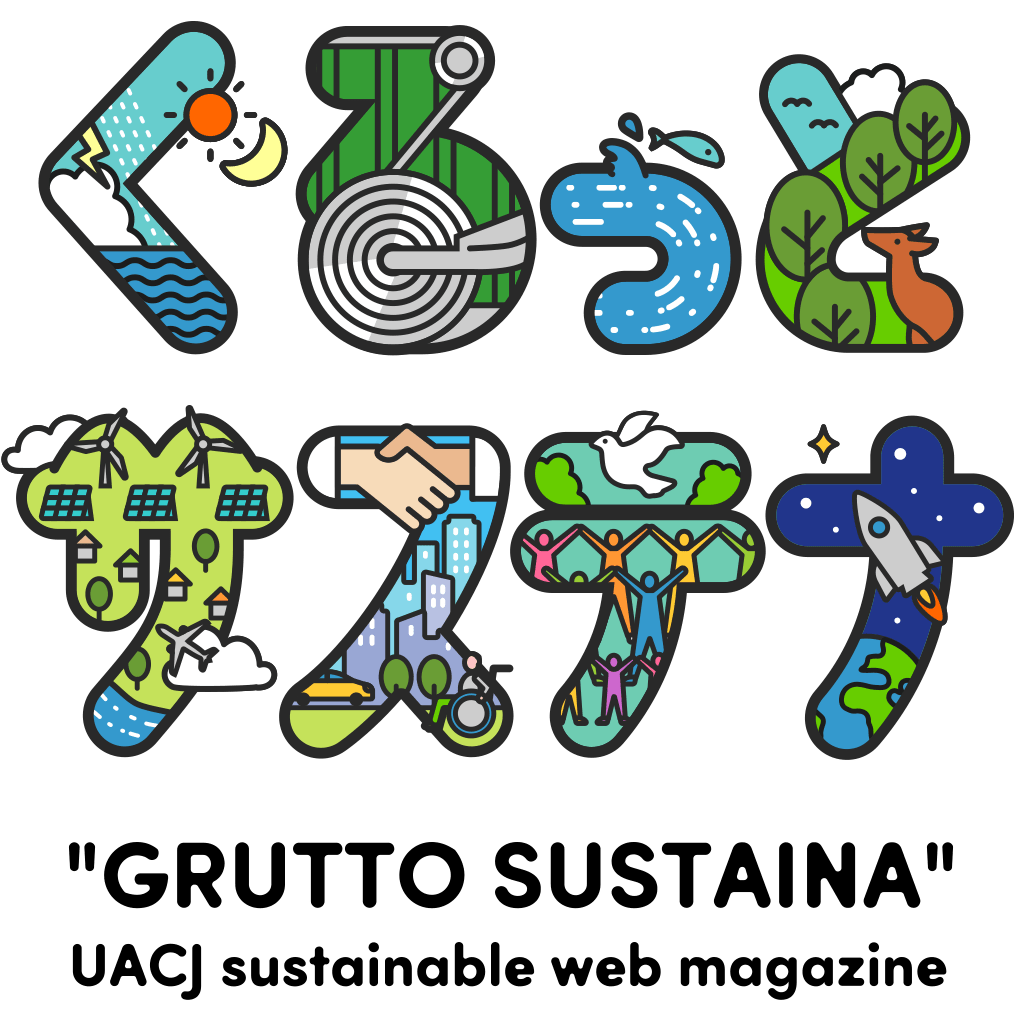RESEARCH
Surprising Facts About Aluminum — The Hidden Material Supporting Tokyo Metro’s Trains
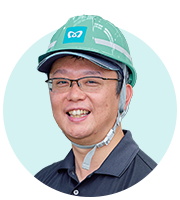
Featuring
Kohei Karasawa,
Tokyo Metro Co., Ltd.
Tokyo Metro Co., Ltd.

Featuring
Tomoya Watanabe,
Tokyo Metro Co., Ltd.
Tokyo Metro Co., Ltd.
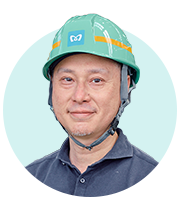
Interviewer
Takuya Morimoto,
UACJ
UACJ

Interviewer
Yoshitoyo Okubo,
UACJ Trading Co., Ltd.
UACJ Trading Co., Ltd.
Tokyo Metro supports the transportation infrastructure of Japan’s urban areas. Many people ride its trains every day without much thought—but did you know that aluminum is used throughout the cars? This time, UACJ’s railway enthusiasts Takuya Morimoto and Yoshitoyo Okubo visited a Tokyo Metro train depot to talk about how aluminum is utilized, the design details behind the trains, and ideas for future sustainability—from the perspectives of both those who make and those who use the material.


Guided by Kohei Karasawa and Tomoya Watanabe of Tokyo Metro, who are involved in train design, they first toured the depot. Seeing the actual trains up close instantly fueled their enthusiasm for railways, and with excitement still in the air, the interview began.
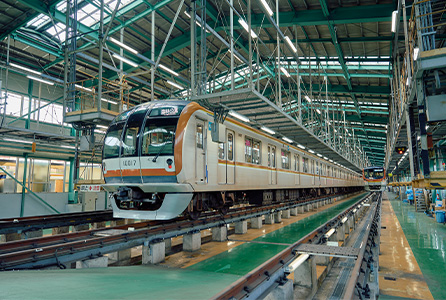
Where is aluminum used in the trains?

Karasawa
In addition to the car body itself, aluminum is used for the interior walls and panels, luggage racks, hanging ad frames, and even the backing boards of the seats.

Morimoto
Really! I knew the body was made of aluminum, but I didn’t realize it was used so extensively inside the cars as well.

Karasawa
Yes, I’d say roughly 70 to 80 percent of all components are made from aluminum.
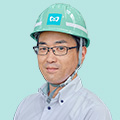
Okubo
That many!? That’s amazing.

Karasawa
Even parts that passengers don’t usually see—such as the interior walls of the passenger compartment, wire support fittings, and equipment suspension brackets—are made of aluminum.

Morimoto
Castings, sheets, extrusions—you’re practically using aluminum in every possible form. As an aluminum manufacturer, that makes us very happy! [laughs]

Okubo
On the flip side, which parts aren’t made of aluminum?

Karasawa
For areas where heat conductivity is an issue, like heater sections, or where extra durability is needed, we use stainless steel instead.

Watanabe
Tokyo Metro trains are designed with a lifespan of around 50 years. So, for parts that passengers frequently touch, such as the handrail poles, or the baseboards that might get bumped by feet or strollers, we choose materials with higher durability.

Morimoto
So you’re selecting the right material for the right place—true “the right material in the right place.”
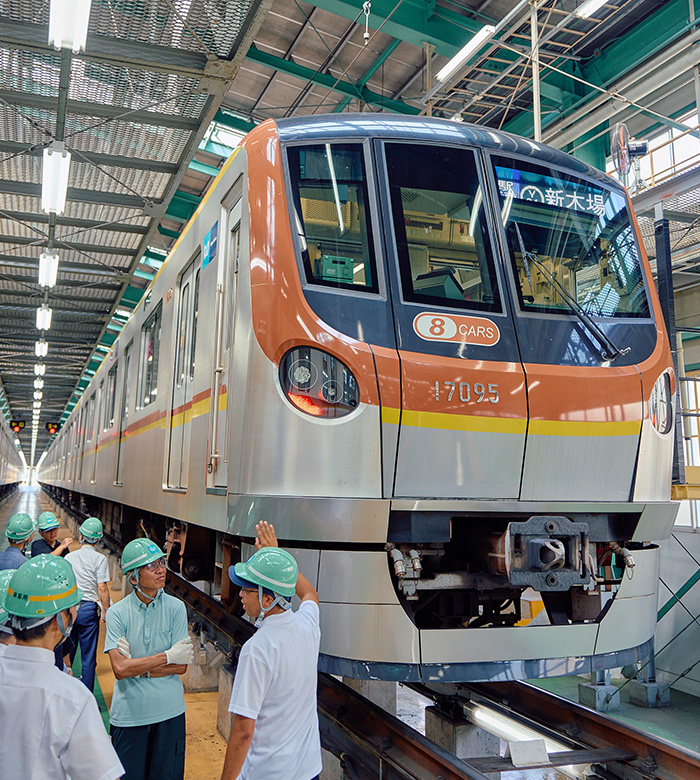
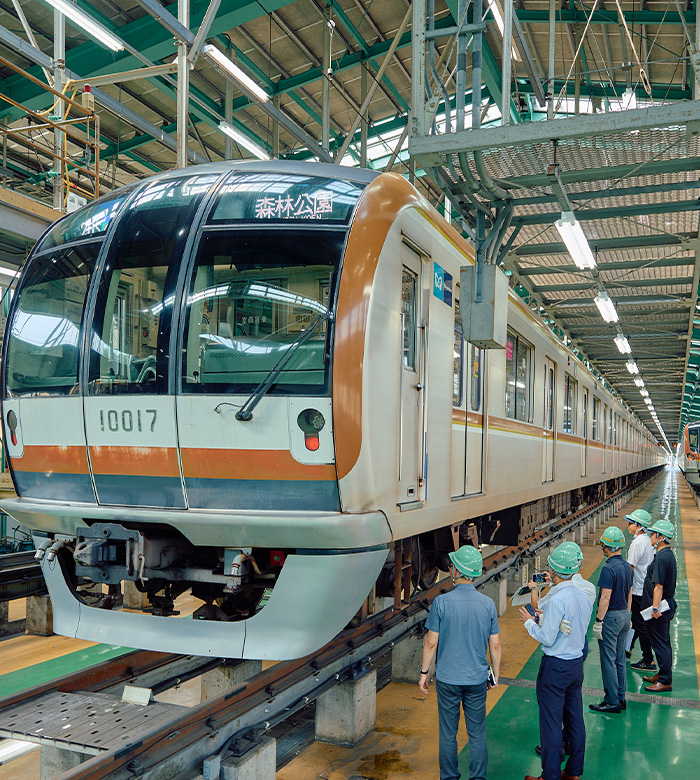
Could you tell us about the history between Tokyo Metro and aluminum?

Karasawa
Tokyo Metro first introduced aluminum train cars in 1966, starting with the aluminum test cars of the Tozai Line Series 5000.

Morimoto
In the 1960s, most other railway companies were still using steel-bodied trains, so that means Tokyo Metro switched to aluminum quite early on.

Karasawa
Yes, at the time, weight reduction was the biggest challenge. That’s why they decided to adopt aluminum train cars.

Watanabe
The decision also had a lot to do with the nature of subway operations. Since subway lines have relatively short distances between stations—around 500 meters on average—trains repeatedly start and stop, which consumes a significant amount of electricity during acceleration.

Okubo
That’s true. The intervals are much shorter than on other lines, which makes a big difference.

Watanabe
Exactly. To reduce electricity consumption as much as possible, making the trains lighter was essential.

Okubo
The lighter the train, the less electricity it uses—so it’s directly linked to energy savings!

Why does Tokyo Metro choose aluminum?

Watanabe
The two biggest reasons are that it’s lightweight and easy to work with. Because aluminum allows for a high degree of processing flexibility—such as cutting, bending, and shaping—it greatly expands design possibilities.

Morimoto
Looking around inside the train, you can see areas with different finishing and forming techniques—like pear-skin texturing (*1) and extrusion processing (*2). It’s clear that a wide range of aluminum technologies are being applied.
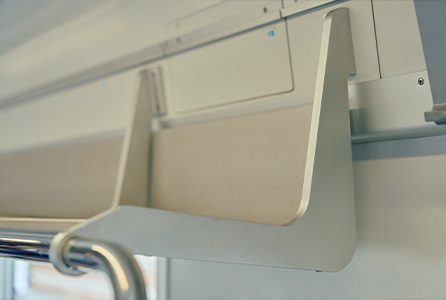

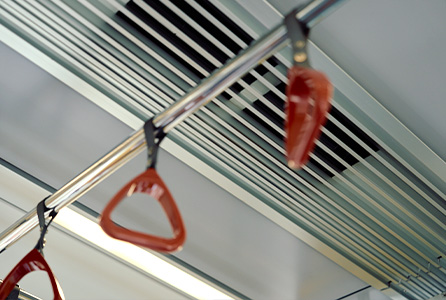

Watanabe
The train cars themselves are built by contracted manufacturers, but even from them, we often hear that aluminum is a very easy material to process.

Karasawa
This might be a bit of a technical topic, but the floor structure of our train cars is designed differently from steel or stainless-steel cars. It doesn’t use traditional cross beams; instead, it incorporates a curtain rail-shaped mounting groove that allows equipment to be suspended. This structure, known as a “double-skin” design, consists of two parallel aluminum sheets with space between them for mounting equipment.

Okubo
Oh, I see!

Karasawa
Thanks to this design, it’s easier to assemble the train and modify equipment layouts. And since the framework and exterior panels don’t need to be individually welded together, it helps reduce both the amount of work and overall production costs.

Morimoto
Aluminum is often said to be expensive as a raw material, but when you factor in labor and production costs, the total cost is actually lower. That’s an interesting perspective for us as a materials manufacturer.

Okubo
So it’s really the perfect combination—lightweight, easy to use, and cost-effective!
*1 Pear-skin texturing: A surface treatment that forms fine irregularities on the surface of metal or plastic, giving it a matte, textured finish similar to the skin of a pear.
*2 Extrusion processing: A hot-forming method in which aluminum or aluminum alloys are extruded at around 400–500°C.
*2 Extrusion processing: A hot-forming method in which aluminum or aluminum alloys are extruded at around 400–500°C.
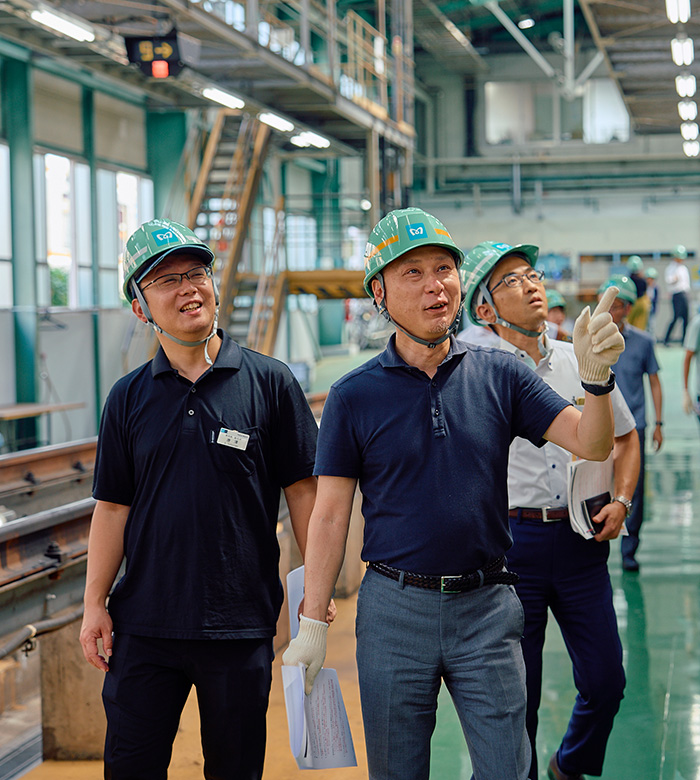
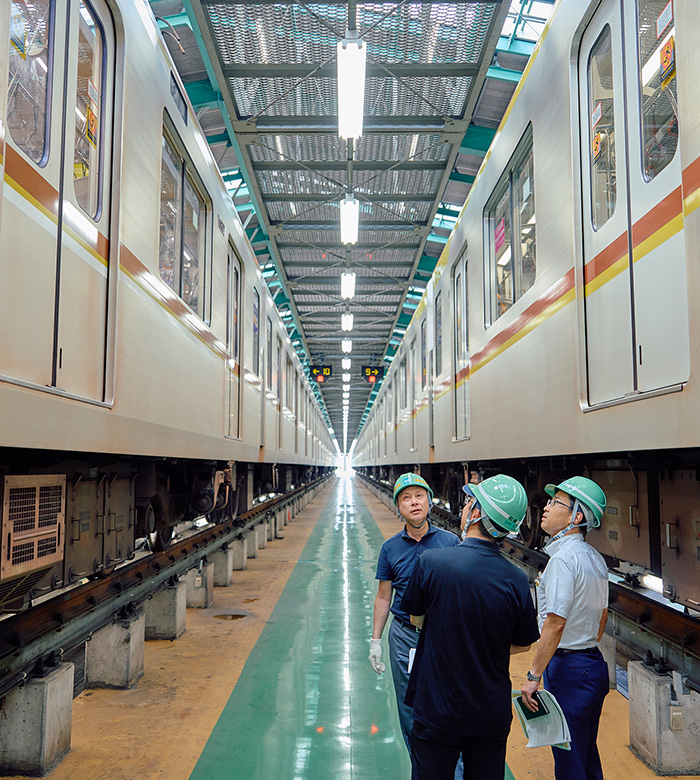
Does aluminum also play a role in the design of the trains?

Karasawa
Actually, the front ends of Tokyo Metro trains differ by line because each one is shaped by machining solid aluminum. The rounded or sharp designs are created to match the unique characteristics of each subway line.

Okubo
Really!? So not just the colors, but even the shapes of the trains are different depending on the line?

Watanabe
Yes, you can really see the difference when you look at them from the front.


Okubo

Morimoto
You’re right! They look completely different.

Watanabe
Since each front end is machined from solid aluminum, there’s a high degree of design flexibility. For example, the Marunouchi Line trains have a softly rounded front shape, which is something that can only be achieved through this machining process.

Okubo
So those designs are possible precisely because they’re made of aluminum.

Watanabe
Exactly. We also apply hairline finishing (*3) to the surface. This helps tone down the natural metallic glare without any paint, giving the trains a more subdued and refined appearance.

Okubo
It feels clean and open—not at all oppressive.

Karasawa
Another advantage of the hairline finish is that it makes joints and weld lines much less noticeable.

Morimoto
Even up close, you can hardly tell where the welds are.
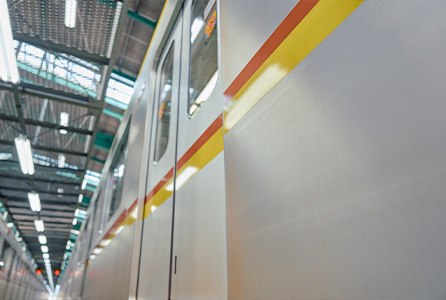

Karasawa
Since these trains are something people use every day, we want the design itself to convey a sense of safety and comfort.
*3 Hairline finishing:
A surface treatment that creates fine, linear scratches in one direction to produce a matte effect, a sense of sophistication, and to make scratches less noticeable.
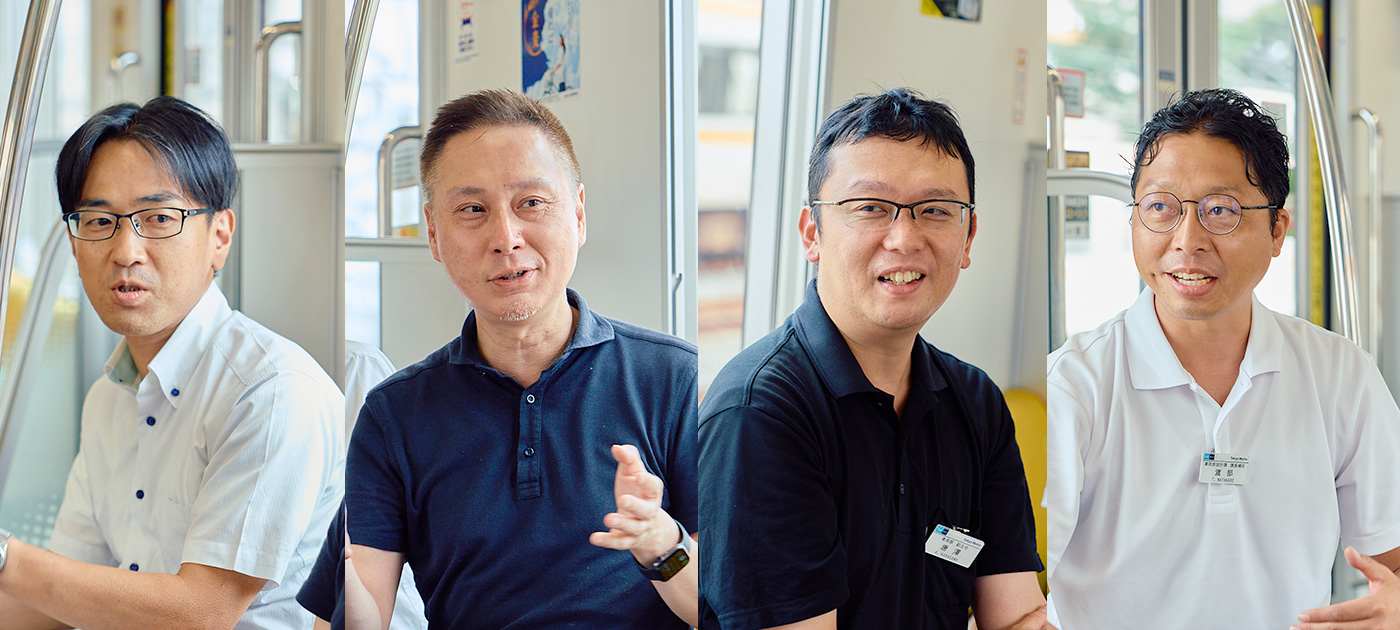
What are some of the design priorities for Tokyo Metro’s train cars?

Karasawa
During the design phase, we make a conscious effort to use the same type of aluminum as much as possible. This is to improve recyclability.

Watanabe
It’s what we call a mono-alloy approach—keeping the materials as uniform as possible. The fewer types of aluminum alloys that are mixed, the easier it is to recycle them later.

Morimoto
I see, that makes sense.

Watanabe
Of course, there are cases where we have to use stainless-steel screws to secure parts for strength reasons.

Morimoto
Right. Aluminum screws do exist, but stainless steel is definitely stronger.

Karasawa
To address that, we try to design assembly methods that minimize or eliminate the need for screws altogether. That way, the trains can be more easily disassembled and recycled in the future.

Okubo
It’s impressive that you’re thinking about that level of detail in the actual design process.

Watanabe
Since we carry so many passengers, safety always comes first. But even with that in mind, we’re constantly looking for ways to improve—experimenting with new mechanisms and components. I believe there’s still plenty of room for innovation if we keep rethinking what’s possible.

Morimoto
That spirit of constant challenge is what drives the next generation of train design. Wonderful!
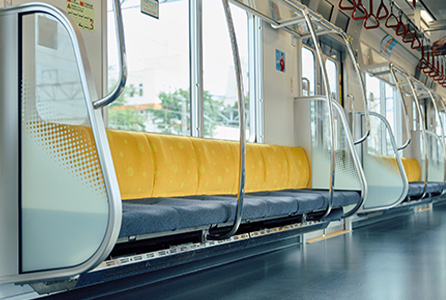
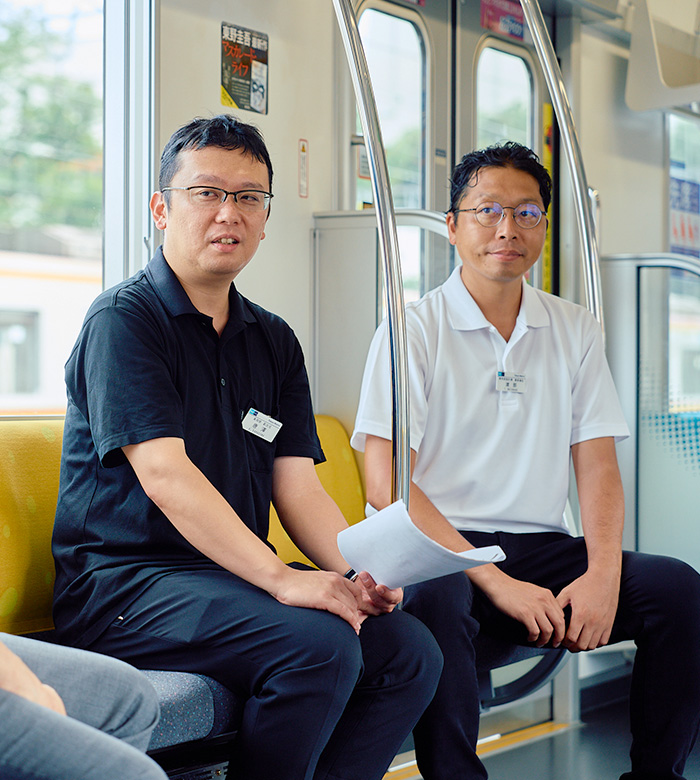
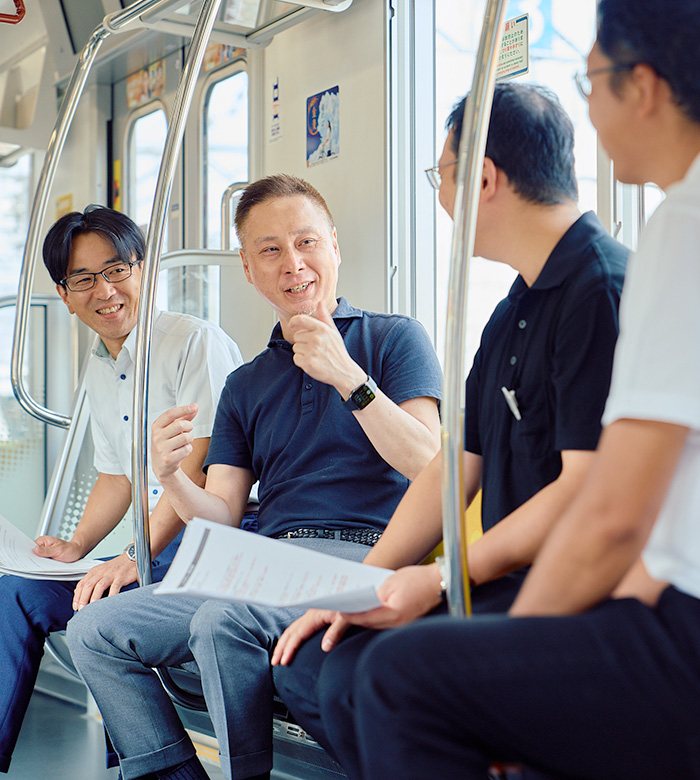
What are some of the sustainability challenges Tokyo Metro is working on?

Karasawa
The reuse of train cars is gradually expanding, but when it comes to recycling, there are still many challenges. The main reason, as I mentioned earlier, is the difficulty of disassembly and material separation.

Watanabe
We still need to make further progress in unifying the types of materials used for components.

Morimoto
From the perspective of a materials manufacturer like us, it’s not just about increasing the variety of materials—it’s also important to narrow them down.

Okubo
Listening to this makes me realize how much we need to consider the times we’re living in and how that affects design and sustainability.

Morimoto
That said, trains are inherently eco-friendly, aren’t they? They don’t emit exhaust gases, and they can carry a large number of passengers at once.

Watanabe
True, but on the other hand, train operations consume a significant amount of electricity.

Morimoto
That’s similar for us as well. Producing and processing aluminum requires a great deal of water and electricity.

Watanabe
As a company, we’ve long been implementing energy-saving measures to reduce the amount of electricity used in operations. But those efforts alone remain internal—they don’t spread beyond our organization. I believe we’ve now reached a stage where we need to tackle sustainability across the entire supply chain, not just within our own company.

Morimoto
That’s something we need to think seriously about too.
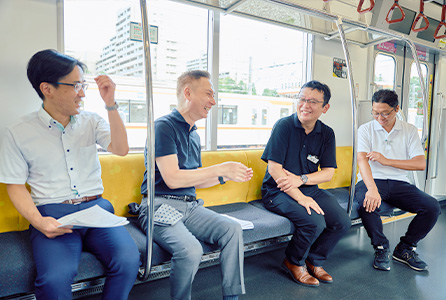
What possibilities do you see for the future of Tokyo Metro’s train cars?

Karasawa
I’d like to keep pursuing greater material uniformity in aluminum and take on the challenge of designing train cars that are even easier to dismantle and recycle.

Morimoto
Someday, we might even see trains made from 100% recycled materials. That’s not just a dream, is it?

Karasawa
Actually, we’re already conducting research on horizontal recycling—reusing aluminum from retired train cars to build new ones. So I think it’s definitely achievable in the future.

Morimoto
Wow, that’s exciting to hear!

Watanabe
To make that happen, collaboration with other railway operators who share through-service lines is essential. If they also adopt train designs based on the same philosophy, recycling methods can be standardized, and the recycling rate will improve significantly.

Okubo
So cooperation across the industry is just as important.

Watanabe
Exactly. Reuse first, then recycle. Right now, we’re in the phase of planting the seeds for the future—revisiting component designs and preparing for what’s to come.

Karasawa
Still, considering that a train’s lifespan is about 50 years, we might not be around to see the results of the initiatives we’re starting now. [laughs]

Morimoto
But that’s the beauty of it—our work today is shaping the future!
And who knows—50 years from now, rail enthusiasts like us might be thrilled to buy scale models of these very trains. [laughs] In a way, that’s a form of sustainability too!
From here on, we in the aluminum industry also need to think beyond just manufacturing—together with our customers, we must consider what comes after the making. All right, let’s keep up the good work! Thank you very much for today.
And who knows—50 years from now, rail enthusiasts like us might be thrilled to buy scale models of these very trains. [laughs] In a way, that’s a form of sustainability too!
From here on, we in the aluminum industry also need to think beyond just manufacturing—together with our customers, we must consider what comes after the making. All right, let’s keep up the good work! Thank you very much for today.
ALL
Thank you!
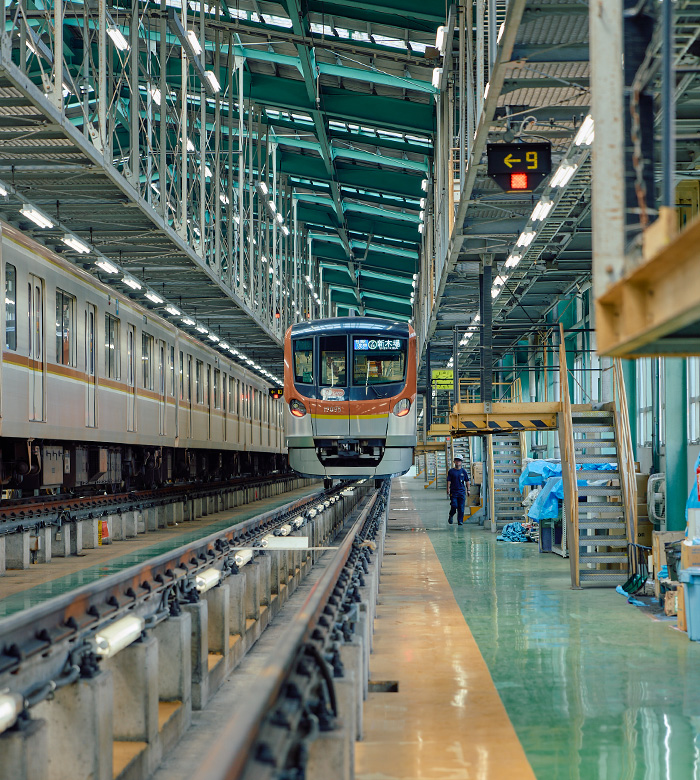
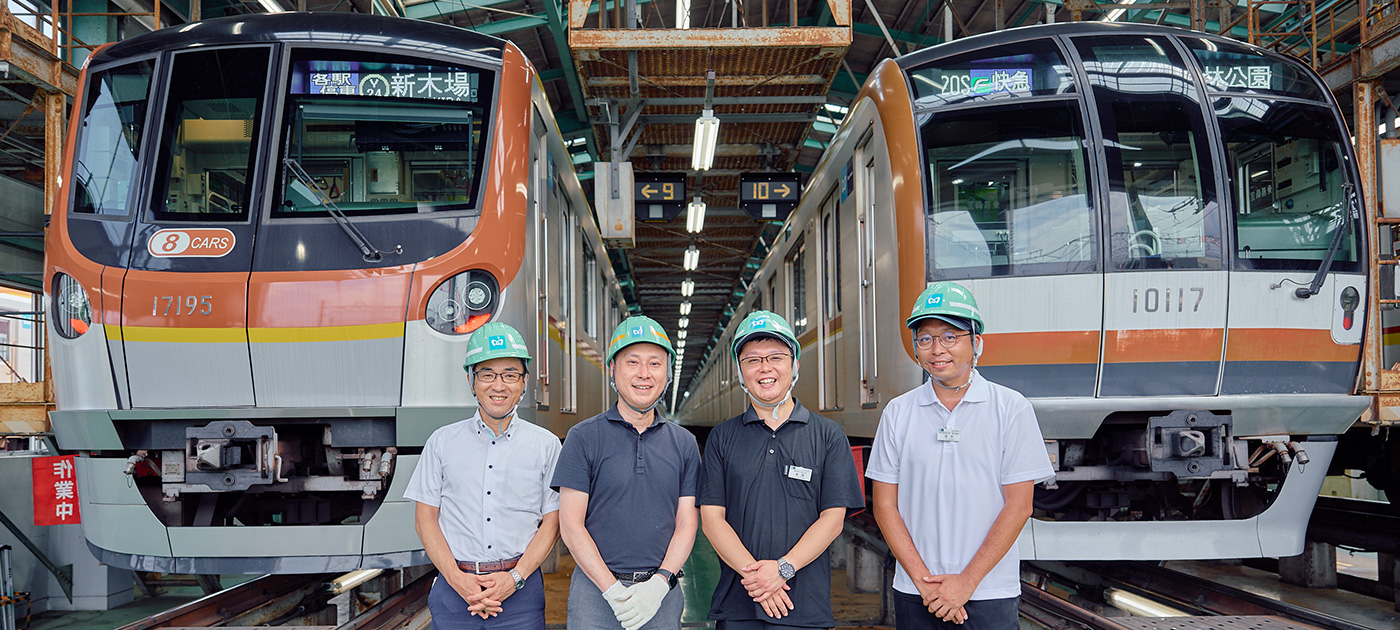


AFTER INTERVIEW

Takuya Morimoto,
UACJ
UACJ
I was truly impressed to learn that Tokyo Metro has been using aluminum train cars since the 1960s and has continued to design trains that take full advantage of aluminum’s unique properties. They’re also deeply committed to reuse and recycling, which aligns closely with the goals UACJ strives toward. This interview gave me a real sense of connection and shared purpose. As a member of UACJ, I’m inspired to keep working toward the wider use of aluminum and the realization of a circular economy.
Profile
Thirty years devoted to aluminum. A former sales rep with a lifelong passion for anything that moves—especially trains. Having relied mostly on a “big voice” and strong personality to get by in both domestic and overseas markets, now on an adventurous journey in the Marketing Department exploring new business opportunities.

Yoshitoyo Okubo,
UACJ Trading
UACJ Trading
I was amazed to learn that aluminum is used not only in the car body but also in areas passengers never see. I realized how these efforts, layer upon layer, contribute to lighter train cars and, ultimately, to energy efficiency. I also found it inspiring that Tokyo Metro is committed to further advancing its mono-alloy approach as part of its contribution to a circular society. Once again, I felt that this direction is very much in line with what the UACJ Group aims to achieve.
Profile
Currently with the Administration Department at UACJ Trading. A train enthusiast for 40 years—mainly a noritetsu (a fan who loves riding trains). I take pride in my ability to instantly recall place names across Japan and to visualize railway maps in my head, which means I never get lost during transfers.
* The information in this article was current at the time of the interview.

